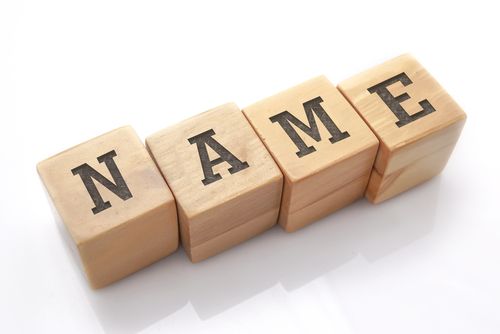 One common tradition that comes with marriage is when a wife takes on the last name or surname of her husband. Her original surname becomes her maiden name, and she’ll be acknowledged publicly and privately with her new name. This custom is typical in English-speaking Western societies, but there’s no law in the United States that requires a new bride to adopt a groom’s patronymic. As you’re contemplating life together with a new spouse, here’s what you should know about your options for a surname.
One common tradition that comes with marriage is when a wife takes on the last name or surname of her husband. Her original surname becomes her maiden name, and she’ll be acknowledged publicly and privately with her new name. This custom is typical in English-speaking Western societies, but there’s no law in the United States that requires a new bride to adopt a groom’s patronymic. As you’re contemplating life together with a new spouse, here’s what you should know about your options for a surname.
No Change
For many reasons, some women choose not to make a change at all. Suppose you’re the last person in your family with a particular name. Maybe you’ve established yourself in your career and a new cognomen could be a hassle or have adverse effects. It could be that in an equal partnership, the idea of a woman taking on her husband’s surname seems old-fashioned or one-sided. Singers Janet Jackson and Mariah Carey became famous as single women and retained their names through multiple marriages. Again, a woman is not required by law to make this change. It’s important that you and your spouse-to-be are on the same page about this beforehand.
Two Names
Another option involves retaining the maiden name as part of a compound or double-barreled moniker. One office is through hyphenation, where both last names are joined with a hyphen. One famous example includes singer Beyonce Knowles-Carter. Some women become publicly known by both last names without the hyphen, such as former U.S. Secretary of State, Hillary Rodham Clinton or actress Kim Kardashian West.
Marriage Mashup
Marriage is often viewed as two becoming one. Consider creating a new last name that is a combination of both partners’ old names. This could be symbolic of two individuals entering a new chapter as a unit. Consider Nate and Kelsey Johnold. They combined “Dippold” and “Johnson” to form a new surname that acknowledges both sides of their family as well as their status as equals. If this sounds like an idea, think carefully about how the new family portmanteau will be written and pronounced. In the aforementioned example, Nate and Kelsey could have also gone with “Dipson.” One combination might have a better ring than the other.
Something New
You and your spouse-to-be may not be into portmanteaus, but you love the idea of a new surname altogether. Californians Tasha Peláez and Joe Schneider weren’t keen on being known as the Schneiders. They decided to go with Mente as their new cognomen, which is the Spanish word for “mind.” This was chosen to reflect their desire to remain mindful of each other’s intellect while also paying honor to Tasha’s Colombian background. Choosing something that has meaning to both of you or that is somehow symbolic of your connection is a great way to celebrate the union you share.
A Female Lead
Another alternative for you and your partner to consider is the husband taking a wife’s cognomen, either as hyphenation or as one name. Italian artist Marco Perego became Perego-Saldaña after marrying actress Zoe Saldaña. The Name Equality Act of 2007 was drafted and enacted in response to a lawsuit filed by the ACLU, citing the relative difficulty for a man to legally change his name upon marriage. This law allows either spouse to make this change with a marriage license. This may be the option that makes the most sense for you as a couple and your future family.
When you’re contemplating a “more perfect union” with the love of your life, there are a lot of things to ponder about the future. A new surname is one of these. You and your partner should discuss the issue and explore options, even if you ultimately decide to stick with tradition.